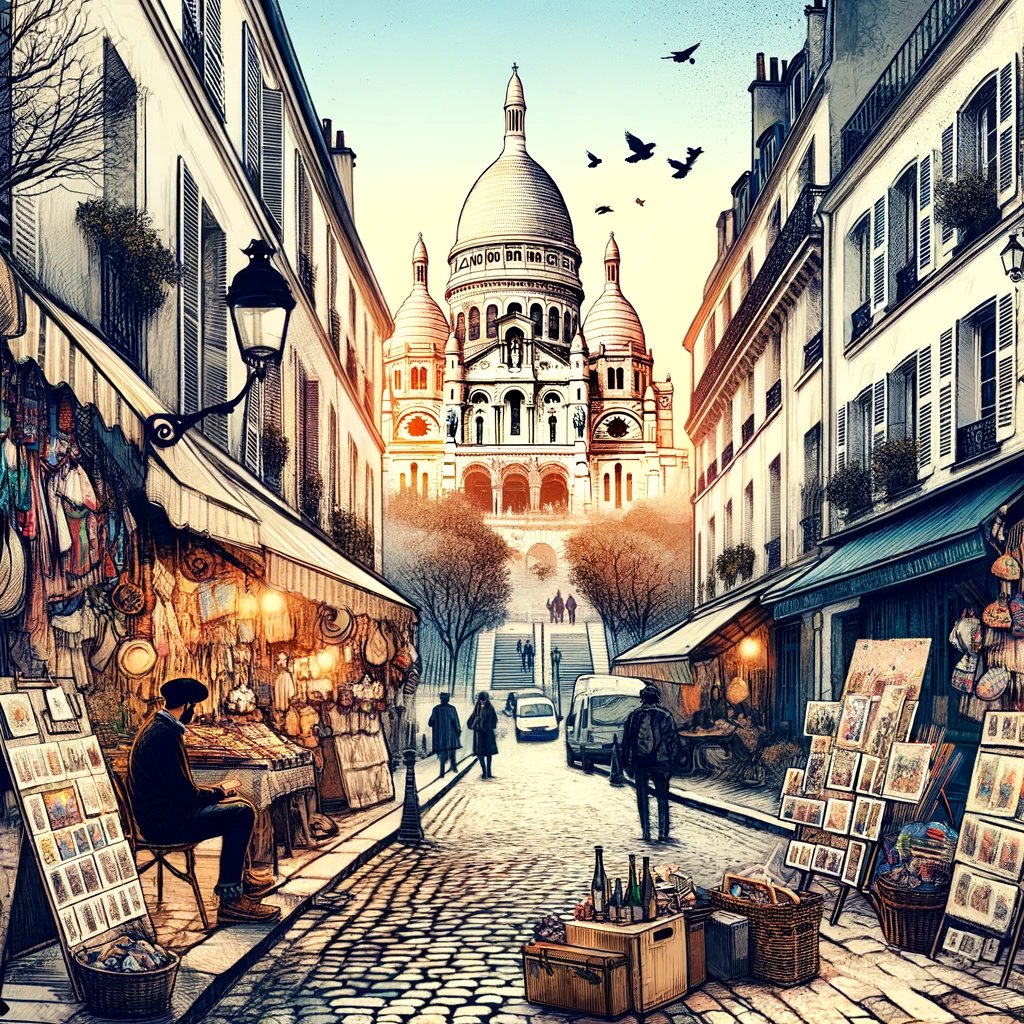
Montmartre is a historic and culturally rich area, known for its artistic heritage and charming streets. Here’s a 2-hours itinerary that includes some interesting stories and landmarks along the way:
Starting Point: Metro Anvers
- Begin your journey at Metro Anvers, located near the base of the Montmartre hill. This area is bustling with energy and is a great introduction to the vibrant Montmartre atmosphere.
Stop 1: Le Bateau-Lavoir
- As you ascend towards Montmartre, make your first stop at Le Bateau-Lavoir, a famous artist’s studio at Place Emile Goudeau. This place was a melting pot of artistic creativity in the early 20th century. It’s where Picasso painted his groundbreaking “Les Demoiselles d’Avignon” and where several other renowned artists like Juan Gris and Amedeo Modigliani worked.
The name “Le Bateau-Lavoir” (“boat for washing”) was coined due to its resemblance to laundry boats on the Seine, and because of its precarious construction, it swayed like a washing barge in strong winds.
Stop 2: Place du Tertre
- A few minutes walk from Le Bateau-Lavoir, you’ll reach Place du Tertre. This picturesque square is filled with artists painting en plein air. It’s a throwback to the times when Montmartre was the heart of the Parisian art scene.
Place du Tertre was where many struggling artists, including Utrillo and Picasso, sold their paintings for a few francs to afford a meal. Too bad our grandparents didn’t pay a visit then…
Stop 3: Basilica of the Sacré-Cœur
- Continue to the Basilica of the Sacré-Cœur, the white-domed church that dominates the Paris skyline. The basilica offers a stunning panoramic view of Paris.
The site of the basilica has a deep history, from being the martyrdom location of Saint Denis to a place of worship built to expiate the “crimes of the Commune” (Catholic church was mostly against the commune). As for the Effeil Tower, it was first disliked by Parisians and seen as a very ugly building. Things change…
Stop 4: La Maison Rose
- As you descend from the basilica, head towards La Maison Rose, a famous pink-painted café. This spot was a popular hangout for artists like Utrillo and Modigliani.
La Maison Rose was run by Laure Gargallo, known as “La Mère Laure”, who created a nurturing haven for struggling artists. Most artists were surviving thanks to generosity from people running shops and restaurants.
Stop 5: Le Lapin Agile
- Just a short walk from La Maison Rose is Le Lapin Agile, an iconic cabaret. Artists, poets, and musicians frequented this spot, making it a hub of Montmartre’s bohemian life.
The cabaret got its name from a famous painting of a rabbit jumping out of a cooking pot. The image became synonymous with the venue.
Find and take rue Lepic.
Stop 6 : Moulin de la Galette
Explore Moulin de la Galette, a windmill that was frequented by artists and writers in the 19th century. This windmill is now a popular tourist attraction, and you can even climb to the top for panoramic views of Montmartre.
While going down rue Lepic, stop at “Les petits mitrons”, a really good baker where you can buy delicious cakes. Their cookies are sheer madness.
Ending Point: Metro Blanche
- Conclude your walk at Metro Blanche, near the famous Moulin Rouge. This legendary cabaret marked the birthplace of the modern can-can dance and was a symbol of the nightlife during the Belle Époque.
The Moulin Rouge was a favorite spot of artist Henri de Toulouse-Lautrec, who immortalized its dancers and patrons in his paintings. You can s’ill attend a show there, but it is very, very tourist-focused. You will scarcely see a Parisian there.
This walk through Montmartre isn’t just a journey through a district of Paris; it’s a trip through history, art, and culture, revealing the layers of stories and characters that have shaped this unique neighborhood.

Leave a Reply